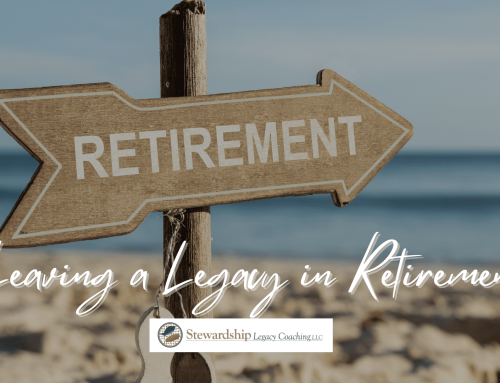Hidden Provisions In The CARES Act
The many hidden provisions in The CARES Act help many business owners are looking for ways to move beyond just surviving to thriving.
This article first appeared on www.forbes.com.
As American businesses start to open back up, many business owners are looking for ways to move beyond just surviving to thriving. Many have received PPP (Paycheck Protection Program) loans or other emergency grants or loans from the SBA (Small Business Association) or their State. Those funds really just help your business to “survive”—to get by and pay the bills. In fact, for those loans to be “forgivable” they must be used for very specific purposes such as payroll, mortgage, rent, etc., and those uses must be documented.
So, how can we get a cash infusion of additional capital to help our business get back into growth mode; to move beyond just surviving to thriving? Are there ways to get cash to help with our marketing efforts, new acquisitions. and other growth plans that would allow us to move from playing defense to playing offense? Well, the answer is “Yes!” These ways are found in some largely unknown provisions of the CARES Act.
Three Related Areas
The provisions are found in three related areas that, when combined together, can provide large Tax Refunds for your business. Those areas are:
- Net Operating Losses (NOL)
- Excess Loss Limitation (ELL) Rules
- Engineering-based Cost Segregation
In the CARES Act, the Net Operating Loss provisions were changed, as well as the Excess Loss Limitation Rules. Under the rules of the Tax Cuts and Jobs Act (TCJA), a business with a Net Operating Loss could only carry-forward losses to future profitable years, and only carry forward 80% at a time.
With a disaster like COVID-19, companies could incur devastating losses in 2020. Under the old rules, they would not be able to fully offset those losses, and only on a carry-forward basis. The new rule lets businesses go back five years and offset prior income to receive a quick refund of past taxes, which they may have paid at higher rates. This amounts to a potential stimulus for businesses.
What is an NOL?
A Net Operating Loss is the net loss for the year attributable to business or casualty losses. Consider this example, if XYZ company makes $1.6 million in revenue and has $3 million in expenses, they tentatively have an NOL of $1.4 million. These can apply to both small companies and large companies. In the chaos of the COVID-19 pandemic, many businesses were labeled ‘non-essential’ and shut down— leaving them with little or no income! On the flip side, the business could be local; the Mom & Pop restaurant, a manufacturing business, a hair salon.
If you have (or had) losses in 2018, 2019 or 2020, and had income in 2013– 2019, you can use the loss to offset past income to get a potential refund. Why is this relevant? This gives businesses an immediate refund of prior taxes. Taking a $500,000 loss back to 2015 (providing you had income) could generate as much as $175,000 of tax refund. Contrast this to the prior rule, where a loss would only be carried forward, and then only 80% and at a 21% tax rate. It’s a $175,000 present benefit versus $84,000 future benefit. What if you didn’t have losses in those years? Maybe the last few years were actually very prosperous for you.
Hidden Provisions In The CARES Act—Large Tax Refund
This is where combining engineering-based Cost Segregation along with the NOL and ELL provisions of the CARES Act can help you potentially receive a large Tax Refund from the IRS. Here’s how it works: Engineering-based ‘cost segregation’ Cost segregation is the method of reclassifying components and improvements of your commercial building from real property to personal property. This process allows the assets to be depreciated on a 5, 7 or 15-year schedule instead of the traditional 27.5 or 39-year depreciation schedule of real property. Thus, your current taxable income may be greatly reduced and your cash flow could increase, in some cases, substantially.
This is a great stewardship opportunity during the difficult business environment created by COVID-19. Every business owner or owner of commercial real estate should ensure they are fully taking advantage of these cash-flow generating opportunities. What just opened up with CARES Act Now, instead of a business or building owner taking the massive losses created by cost segregation and carrying them forward to apply against future income, the CARES ACT allows you to go back to prior paid income tax returns and apply the losses there which would trigger an Income Tax refund.
Cost Segregation is not new…but the CARES Act provisions are!
Cost segregation has been used since 1997 when HCA (Hospital Corporation of America) won its landmark case against the IRS. It’s used by some of the largest companies in the world. Unfortunately, many small business owners have never even heard of it. Now with the special provisions of the CARES Act, cost segregation is supercharged because it allows you to go backward (instead of just forward) and potentially get a tax refund for your business from the IRS.
Read this and other articles on Forbes.com: https://www.forbes.com/sites/forbesbooksauthors/2020/08/25/hidden-provisions-in-the-cares-act-learn-to-thrive-as-america-opens-back-up-for-business/#4f59ce577173
To learn how you can Create a Thriving Legacy, visit www.thrivingfamilylegacy.com.






